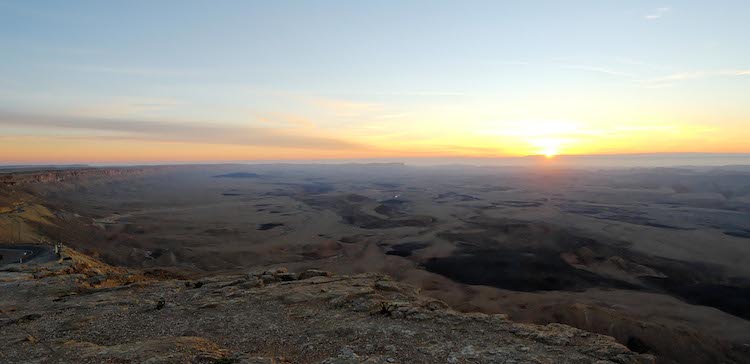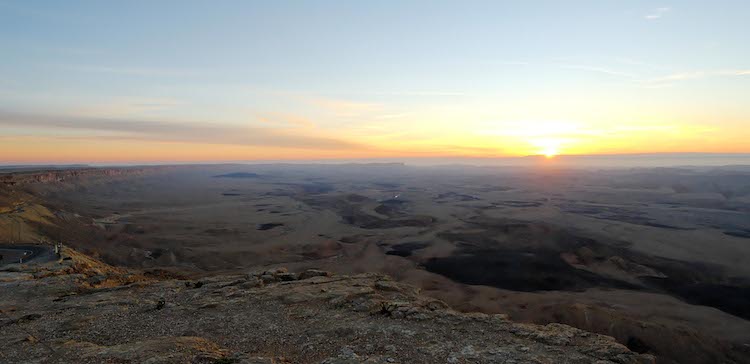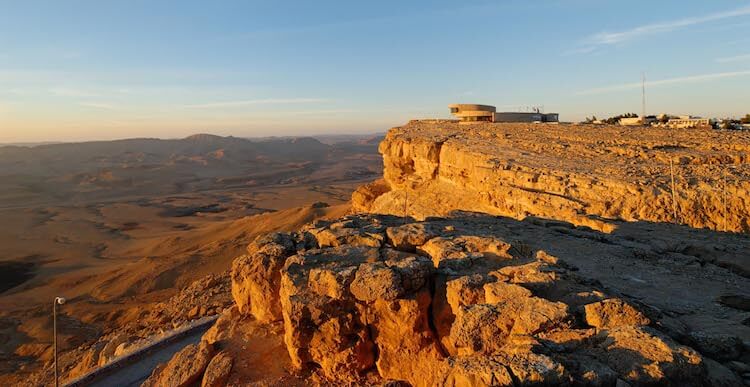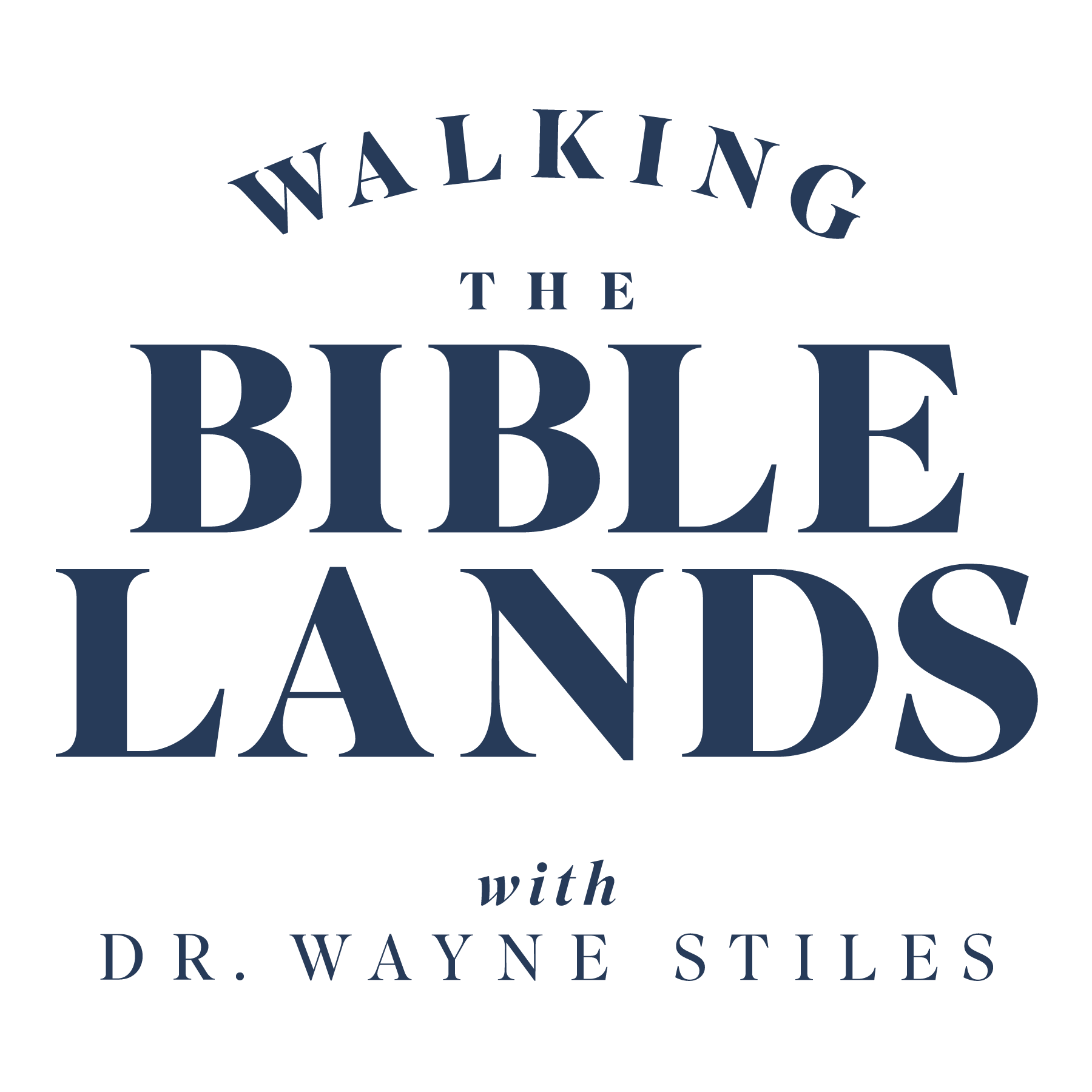
Anyone who wants a taste of the environs the Hebrews experienced during their wilderness wanderings needs to visit southern Israel. Here you can see far.

(Photo: Machtesh Ramon at sunrise. Courtesy of the Pictorial Library of Bible Lands)
For instance, in the southern Wildernesses of Paran and Zin the ground is composed of flint and sharp rocks, gravel, and soil with deep cracks.
- Here the Hebrews wandered for four long decades (Numbers 10:12; 12:16).
- From here Moses sent the spies out to check out the Promised Land (Numbers 13:1-3).
- Four centuries earlier, this wilderness saw Hagar and Ishmael after they left Abraham (Genesis 21:20-21).
This wilderness area of southern Israel lets you see far—in more ways than one.
Seeing Far at the Mitzpe Ramon Observatory
North of the Wilderness of Paran lies several large craters. Israel contributed to geology the term makhteshim—which represent craters that exist only in Israel.
During their 40-year wilderness wandering in southern Israel, the Hebrews included the Wilderness of Zin in their journeys—and likely beheld these canyons (Numbers 20:1-2).

(Photo: Machtesh Ramon with Mizpe Ramon observatory. Courtesy of the Pictorial Library of Bible Lands)
Erosion from a single waterway creates a valley with anticlines that enclose the crater on all sides, creating a makhtesh or “bowl.”
- The Makhtesh Ramon is the largest of three makhteshim in the Negev, measuring 25 by 5 miles and plunging 1300 feet deep.
- The Mitzpeh Ramon Observatory gives a spectacular view of the Makhtesh Ramon.
- The Makhtesh effectively offers an open-air museum of volcanic rock, variegated clays, and rough hunks of quartzite.
The area in southern Israel represents the largest national park in Israel and the most beautiful parts of the Negev Highlands.
Seeing Farther at Sde Boker
Driving north from the Mitzpe Ramon Observatory, the modest home at Sde Boker where Israel’s first prime minister lived houses a museum that memorializes his legacy.

(Photo: Tombs of David and Paula Ben Gurion near Sede Boqer. Courtesy of the Pictorial Library of Bible Lands)
Although we can see far from atop the Makhtesh Ramon, David Ben-Gurion saw farther. The visionary saw Israel’s vast and barren Negev in southern Israel as holding the future potential for a new society for Israel.
- Leading by example, he settled in the kibbutz Sde Boker in 1953.
- Because the Negev receives barely eight inches of rain per year, many saw Ben-Gurion’s dream as a fantasy. But water piped from the Sea of Galilee has helped the desert bloom.
- Ben-Gurion and his wife are buried nearby, overlooking the Negev they helped to tame.
Seeing Life in Barren Places
The patriarch, Isaac, also dwelt in the Negev, and Isaac faced the challenge of finding water as well. The Scriptures say that because “The Lord blessed him” (Genesis 26:12), Isaac sowed and reaped a hundredfold in the Negev.
Only God gives life in a barren land and in barren lives.
Tell me what you think: Have you ever been to these places? To leave a comment, just click here.
You’ll find these sites and more in a book I wrote for the Israel Ministry of Tourism, 100 Off-The-Beaten-Path Sites. You can download a free copy.
Click here to leave a comment.
-1.png?width=5230&height=1198&name=unnamed%20(4)-1.png)

.jpg?width=350&name=Wayne-books-350wide%20(1).jpg)




